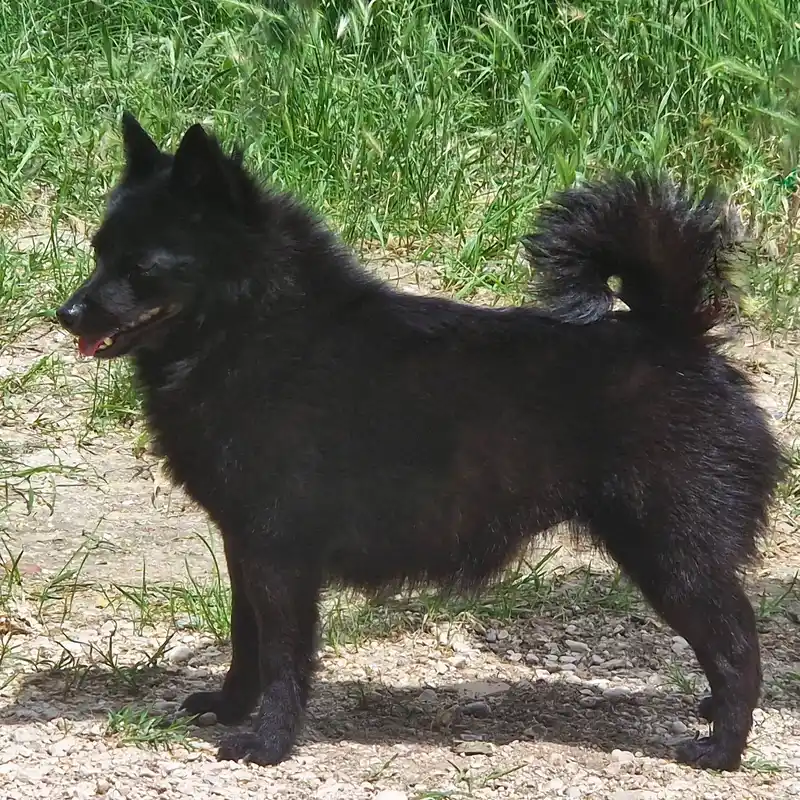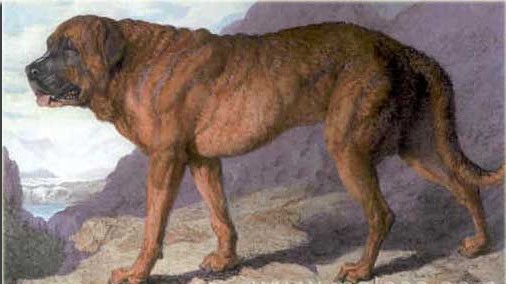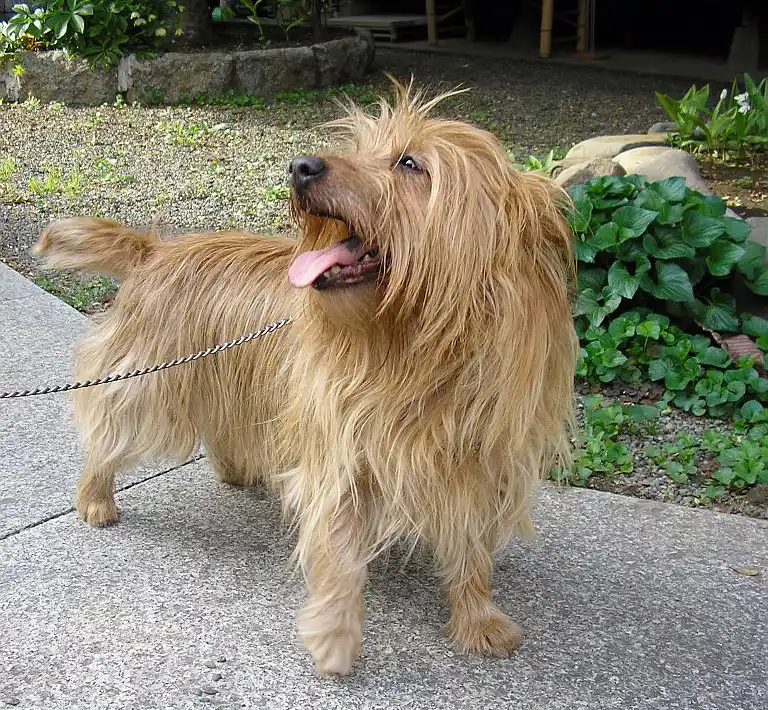Norwegian Lundehund
The Norwegian Lundehund is a small, agile breed known for its unique six toes and flexibility. Originally bred for puffin hunting, they are affectionate companions with a playful nature.
Overview
🐕Breed Overview
✨Key Traits
💡What Makes Norwegian Lundehund Special
The Norwegian Lundehund is distinguished by its remarkable physical adaptations, including its six toes, which provide enhanced grip and stability on rocky terrain. This breed is also known for its flexibility, allowing it to navigate tight spaces with ease.
Their unique vocalizations and tendency to bark make them excellent communicators, while their independent nature can sometimes pose challenges during training. Lundehunds are highly intelligent and require mental stimulation to prevent boredom.
Their affectionate demeanor and playful spirit make them wonderful companions for families who can provide the attention and socialization they need. Overall, the Lundehund's combination of unique traits and charming personality makes it a truly special breed.
The Norwegian Lundehund is a small, agile breed with a rich history rooted in the rugged terrain of Norway's Lofoten Islands. Known for its unique physical characteristics, including six toes on each foot and remarkable flexibility, this breed was originally developed for hunting puffins in their cliffside nests. With a height ranging from 12 to 15 inches and a weight of 13 to 15 pounds, the Lundehund is compact yet sturdy, making it well-suited for its original purpose.
The breed's double coat, consisting of a dense outer layer and a soft undercoat, provides protection against the elements, while its alert and loyal temperament makes it an excellent companion and watchdog. Despite its hunting background, the Norwegian Lundehund is known for its affectionate nature, forming strong bonds with its family members. They are playful and friendly with other dogs, but can be reserved around strangers.
Their intelligence and independence can make training a challenge, requiring experienced owners who can provide consistent guidance and socialization. Lundehunds thrive in active households where they can engage in regular exercise and mental stimulation, such as hiking, agility training, or interactive play. As a breed, they are prone to certain health issues, including Lundehund gastroenteropathy, which can affect their digestive health.
Regular veterinary check-ups and a high-protein, low-fat diet are essential for maintaining their well-being. With proper care, the Norwegian Lundehund can live a healthy life of 12 to 14 years, bringing joy and companionship to those who appreciate their unique qualities. Whether as a hunting partner or a beloved family pet, the Norwegian Lundehund is a breed that captures the hearts of many with its charm and resilience.
🎉Fun Facts
Lundehunds are sensitive dogs that require gentle training methods to build trust.
Lundehunds were once used to hunt puffins, retrieving them from steep cliffs and narrow caves.
The Norwegian Lundehund is the only dog breed with six toes on each foot.
They can bend their heads backward to touch their spines, allowing them to navigate tight spaces.
This breed is known for its vocalizations and can be quite chatty, often barking to communicate.
Breed Characteristics
Family & Friends
Good Behavior
Get Up & Go
Household Harmony
Temperament & Personality
✨Key Traits
🐕Core Temperament
The Norwegian Lundehund is characterized by its alert and energetic temperament. They are loyal and protective of their families, often forming strong bonds with their owners.
While they can be wary of strangers, they are not aggressive and typically greet new people with curiosity rather than hostility. Their playful and affectionate nature makes them great companions, especially for families who can provide them with the attention and socialization they need.
However, their independent streak can lead to challenges in training, requiring experienced owners who can provide consistent guidance and positive reinforcement. Overall, the Lundehund's temperament is a delightful mix of curiosity, loyalty, and playfulness, making them a unique addition to any household.
💫Personality Profile
Norwegian Lundehunds are known for their unique combination of independence and affection. They are curious and intelligent, often exploring their surroundings with enthusiasm.
While they can be reserved around strangers, they are loyal and loving with their families. Their playful nature makes them great companions, but they can also be stubborn, requiring patience and consistency in training.
Lundehunds thrive on social interaction and need regular exposure to new experiences to build confidence and reduce shyness. They are alert and protective, making them excellent watchdogs, but they are not aggressive and typically greet visitors with barking rather than hostility.
🔊Vocal Tendencies
Norwegian Lundehunds are known for their vocal tendencies, often barking to communicate their needs or alert their owners to potential intruders. They can be quite chatty, especially when excited or anxious.
Their barking may vary in intensity depending on the situation, but they are generally not aggressive barkers. Socialization and training can help manage excessive barking, ensuring that they learn appropriate times to vocalize.
Overall, their vocal nature adds to their charm, but owners should be prepared for a dog that enjoys expressing itself.
Affection & Social Traits
Energy & Activity
Communication Style
Care Requirements
🏃♂️Exercise Requirements
Daily Exercise
The Norwegian Lundehund requires a moderate amount of exercise to maintain its physical and mental well-being. Ideally, they should engage in at least 30 to 60 minutes of exercise daily, which can be divided into two or three sessions.
Activities such as brisk walks, playtime in a secure yard, or engaging in dog sports like agility can be beneficial. Given their history as puffin hunters, they enjoy activities that allow them to explore and climb, so incorporating hikes or visits to dog parks with varied terrain can be particularly fulfilling.
Puppies may require shorter, more frequent play sessions, while senior dogs may benefit from gentler exercises to accommodate their energy levels and joint health. Regular exercise helps prevent behavioral issues stemming from boredom, such as excessive barking or digging, and supports cardiovascular health, weight management, and overall happiness.
Preferred Activities
🏠Living & Adaptability
Space Requirements
Norwegian Lundehunds are adaptable to various living environments, but they thrive best in homes with access to outdoor space. While they can live comfortably in apartments, it is essential to provide them with regular opportunities to exercise and explore outside.
A secure yard is ideal for allowing them to engage in their natural climbing and exploring behaviors. In smaller living spaces, owners should ensure daily walks and playtime to meet their exercise needs.
The breed's size and energy level make them suitable for both urban and rural settings, but they should not be confined for long periods, as this can lead to anxiety and destructive behaviors.
Climate Preference
🍲Feeding Guide
Schedule
Food Types
Portion Size
Special Nutritional Needs
Due to their predisposition to gastrointestinal issues, Norwegian Lundehunds may benefit from a high-protein, low-fat diet that is free from grains, particularly wheat. Regular monitoring of protein and albumin levels is recommended to ensure optimal health. Owners should consult with a veterinarian to determine the best dietary plan tailored to their dog's individual needs.
✨Grooming Requirements
Grooming Overview
The Norwegian Lundehund has a double coat that requires regular grooming to keep it healthy and free from mats. The outer coat is dense and rough, while the undercoat is soft and insulating.
Weekly brushing is typically sufficient to manage shedding, but more frequent grooming may be necessary during seasonal changes when they shed more heavily. Bathing should be done as needed, usually every few months, to maintain coat cleanliness.
Regular nail trimming is essential, as their nails grow quickly. Owners should also check their ears regularly for debris and clean them as necessary to prevent infections.
Care Schedule
Brush weekly; bathe as needed (approximately every 1-3 months); trim nails every 2-4 weeks.
Health Profile
⚕️Health Care
Regular health care is vital for the Norwegian Lundehund's longevity. Routine veterinary check-ups, vaccinations, and preventive treatments can help catch potential health issues early.
Owners should also be vigilant about their dog's diet and exercise needs, as maintaining a healthy weight and active lifestyle can significantly impact their lifespan. Early detection and management of health conditions are crucial for ensuring a long and healthy life.
Health Issues Overview
⏳Average Lifespan
Genetic Factors
Genetics play a significant role in the Norwegian Lundehund's lifespan, as certain hereditary health issues, such as Lundehund Gastroenteropathy, can impact their overall health. Responsible breeding practices that prioritize genetic diversity are essential to reduce the risk of inherited conditions. Potential owners should seek reputable breeders who conduct health screenings and genetic testing to ensure they are adopting a healthy puppy.
Living Conditions
The Norwegian Lundehund's lifespan can be influenced by various environmental factors, including housing conditions, climate, and social interactions. A stable and loving home environment, along with regular exercise and mental stimulation, can promote longevity.
Exposure to extreme temperatures should be managed, as they have a moderate tolerance for heat and cold. Social interactions with humans and other pets are crucial for their emotional well-being, helping to reduce anxiety and behavioral issues.
Owners should ensure that their Lundehund has a safe and engaging environment to thrive in.
🏥Common Health Issues
Lundehund Gastroenteropathy
Warning Signs
🔬Diagnosis
Veterinarians typically diagnose this condition through a combination of clinical signs, dietary history, and exclusion of other gastrointestinal disorders.
💊Treatment
There is no cure for Lundehund Gastroenteropathy, but symptoms can be managed through dietary adjustments and supportive care.
📝Management Tips
Management includes a high-protein, low-fat diet, regular veterinary check-ups, and monitoring for signs of digestive distress. Some dogs may require specific dietary formulations to manage symptoms.
🛡️Preventive Care
🔬Gastrointestinal Health Evaluation
This test assesses the dog's digestive health and helps identify any underlying gastrointestinal issues that may affect nutrient absorption.
📅 Annually or as recommended by a veterinarian, especially for dogs showing symptoms of digestive distress.
Training
🧠Intelligence & Trainability
💪Work Drive
Norwegian Lundehunds have a moderate work drive, stemming from their history as hunting dogs. They thrive on mental stimulation and enjoy tasks that challenge their intelligence.
Engaging them in activities such as scent work, agility, or obedience training can help fulfill their need for mental engagement. Without sufficient stimulation, they may resort to undesirable behaviors, such as excessive barking or digging.
Providing a variety of activities that cater to their natural instincts will keep them happy and well-adjusted.
⚠️Training Considerations
Norwegian Lundehunds can be independent and stubborn, which may pose challenges during training. Their intelligence and problem-solving abilities can lead them to test boundaries, making consistent and patient training essential.
Socialization is crucial, as these dogs can be shy around strangers and may bark excessively if not properly introduced to new experiences. To overcome these challenges, owners should employ positive reinforcement techniques, establish a routine, and provide plenty of socialization opportunities from an early age.
Engaging in interactive training sessions that stimulate their minds can also help mitigate behavioral issues.
📝Training Tips
Training a Norwegian Lundehund requires patience and consistency. Positive reinforcement methods, such as treats and praise, work best to motivate this breed.
Start with basic commands and gradually introduce more complex tasks, ensuring that training sessions are kept short and engaging to maintain their interest. Socialization should begin early, exposing them to various environments, people, and other animals to build their confidence.
Owners should be prepared for some challenges, especially with housetraining, and should establish a consistent schedule to help their Lundehund succeed. Incorporating fun activities, such as agility training, can also enhance their learning experience and strengthen the bond between dog and owner.
History & Heritage
📜Origin Story
The Norwegian Lundehund, or 'puffin dog,' originated on the remote Lofoten Islands of Norway, where it was uniquely adapted to hunt puffins in their cliffside nests. The breed's name reflects its primary function, with 'lunde' meaning puffin and 'hund' meaning dog.
The Lundehund's remarkable physical adaptations, including its six toes and flexible joints, allowed it to navigate the treacherous terrain of its native habitat. Despite its historical significance, the breed faced near extinction in the 20th century due to disease and changing hunting practices.
A dedicated effort to revive the breed began in the 1960s, leading to its recognition by the American Kennel Club in 2011. Today, the Norwegian Lundehund is celebrated for its unique characteristics and remains a cherished companion for those who understand its needs.
⏳Development History
The Norwegian Lundehund's development can be traced back to at least the 1600s, when it was used for hunting puffins along the rugged Norwegian coastline. Its unique physical traits, such as the six toes on each foot and extraordinary flexibility, evolved in response to the breed's demanding hunting environment.
However, the breed faced significant decline in the early 1900s due to changes in hunting practices and a dog tax that discouraged ownership. The population dwindled further during World War II due to outbreaks of distemper, leaving only a handful of dogs to repopulate the breed.
Through careful breeding practices initiated in the 1960s, the Norwegian Lundehund has made a remarkable recovery, although it remains a rare breed today.
🛡️Purpose & Historical Role
Originally bred for hunting puffins, the Norwegian Lundehund played a crucial role in the survival of coastal communities in Norway. Its ability to climb steep cliffs and navigate narrow caves made it an invaluable asset for retrieving puffins and their eggs.
Over time, as hunting methods evolved and the demand for Lundehunds decreased, their role shifted primarily to that of a companion dog. Despite this change, the breed retains its hunting instincts and remains alert and protective, making it an excellent watchdog.
🏺Cultural Significance
The Norwegian Lundehund holds a unique place in Norwegian culture, particularly in the Lofoten Islands, where it was developed for the specific purpose of hunting puffins. This breed's remarkable adaptations, such as its extra toes and flexibility, allowed it to navigate the challenging cliffs and caves where puffins nested.
Historically, the Lundehund was not only a hunting companion but also a vital part of the local economy, providing meat and down feathers. The breed's survival through near extinction during the 20th century has made it a symbol of resilience and cultural heritage in Norway.
Today, it is celebrated for its unique characteristics and is recognized as a national treasure.
Conservation Status
This breed is rare and not commonly found outside its region of origin.









